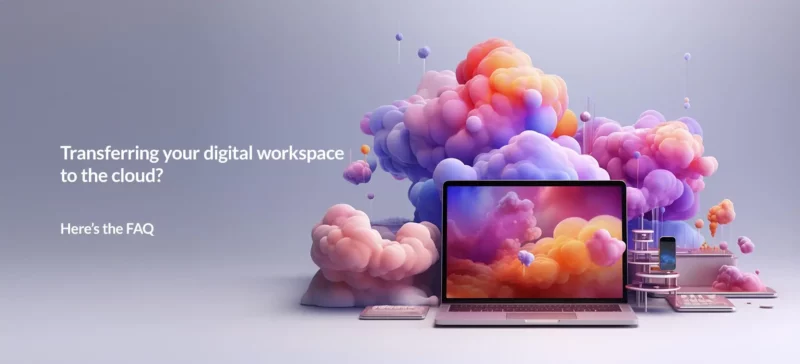Teams are more geographically dispersed than ever before, and generational and cultural differences are increasingly common. While this diversity brings a wealth of perspectives and experiences to the table, it can also present challenges in communication and collaboration. Fortunately, these can be easily overcome.
In this article, I’ll explore how effective digital workplaces organized with Microsoft 365 suite can bridge these gaps and foster successful collaboration of your team. Let’s get started.
Microsoft 365 can bridge the generation gap
Despite many post-covid office comebacks, the traditional office environment can no longer be the sole driver of teamwork. And that’s certainly for the better. While plenty of IT companies have solely relied on software tailored for remote work for years now, tools like Microsoft 365 are revolutionizing the way traditional and age-diverse offices connect and share information.
However, simply having access to these tools isn’t enough. To be truly effective, a digital workspace needs to be designed with the specific needs of a diverse workforce in mind.
Want to learn more? Watch the interview where I explain how to master team dynamics based on M365 tools.
Why your team needs a digital workplace
There are several key benefits a proper digital workplace brings to the table. Let’s take a look at them.
Customization of user experience
Personalization is key and a one-size-fits-all approach simply won’t work. While full customization of a workspace might seem ideal, a more strategic approach is to configure a suite of services (such as Microsoft 365) that aligns with specific business needs and has a relatively low entry threshold. This ensures a user-friendly experience that is familiar and relevant across generations and cultures.
The key features of a successful digital collaboration tool lie in its ability to be:
- Role-based
Tools should be intuitive and cater to specific roles within a team. Users shouldn’t waste time wondering which platform to use for a particular task.
- Automated and streamlined
Features like self-service catalogs and AI assistants can guide users and reduce confusion, especially with the ever-evolving landscape of M365 services.
- Data-centric
Maintaining data quality and integrity is crucial for trust and informed decision-making. Hence, tools should ensure data accuracy and a clear lifecycle for all information.
Governance with a user-centric approach
Security and governance are essential aspects of any digital workplace. However, it’s unrealistic to expect users to become cybersecurity experts. The best approach is to automate security measures and policy enforcement seamlessly. This empowers users to focus on their tasks while minimizing risks.
Pre-configured digital workspaces
Sometimes, the most significant improvements come from seemingly simple solutions. In my experience, pre-configured workspaces can significantly enhance collaboration, especially for teams that are in the process of transitioning to the cloud. These workspaces provide a centralized hub for project data and documents, fostering trust and efficient decision-making.
CTA: A pre-configured digital workspace and start working in the cloud.
Button: Get in touch
Embracing a user-centric approach to digital workplaces can empower diverse teams to collaborate effectively. By focusing on intuitive design, role-based functionalities, and seamless governance of dedicated tools, such as Microsoft 365, we can quickly create a collaborative ecosystem that bridges the gaps and unlocks the true potential of a diverse workforce.
Transferring your digital workspace to the cloud? Here’s the FAQ

Based on my experience in implementing intranet solutions for numerous companies of many different backgrounds and sizes, let me share a list of common questions you might have at various stages of transferring your workspace to the cloud.
What are the limitations of traditional email-based communication in the workplace?
Ongoing communication through email can cause information overload, lack of user-friendliness for diverse teams, and difficulty in maintaining data quality and security. Use it for a different purpose.
How does a modern Intranet solution improve employee engagement and efficiency?
Modern intranet solutions can improve employee engagement and efficiency by providing a central hub for communication, collaboration, and access to information. They can streamline workflows, reduce reliance on email, and foster a more connected and informed workforce.
What are the key features of a successful internal communication tool?
The key features of a successful internal communication tool include:
- Role-based functionality
Tailored interfaces and permissions ensure users have the tools they need and avoid confusion.
- Intuitive design
A user-friendly experience is essential for driving adoption across generations and cultures.
- Automation
Features like self-service portals and AI assistants can reduce reliance on IT support and streamline workflows.
- Data management
Tools that you use should ensure information accuracy, security, and a clear lifecycle for all data.
Why is it important for a communication tool to be easily scalable?
Scalability is important because a communication tool needs to adapt to a growing workforce and evolving business needs. A well-designed intranet can accommodate new users, departments, and functionalities without sacrificing performance.
What are some key challenges you can have while implementing the solution?
Challenges during implementation can include user resistance to change, ensuring data migration is smooth, and effectively communicating the value proposition of the new system to employees.
What are some key business benefits of intranets?
Intranets offer a range of business benefits, including improved communication and collaboration, increased employee engagement, and a more efficient knowledge base.
What are the benefits of integrating Microsoft 365 into internal communication tools?
Integration such as Microsoft 365 can create a more unified user experience, leverage familiar features, and provide access to a wider range of collaboration functionalities. Think of it as the golden mean of collaboration.
